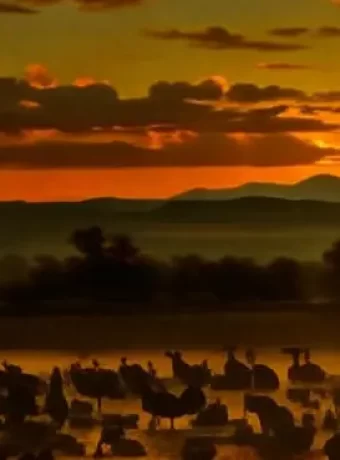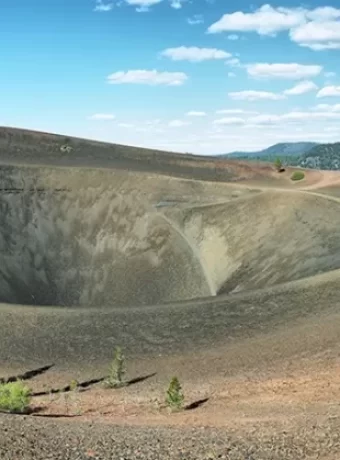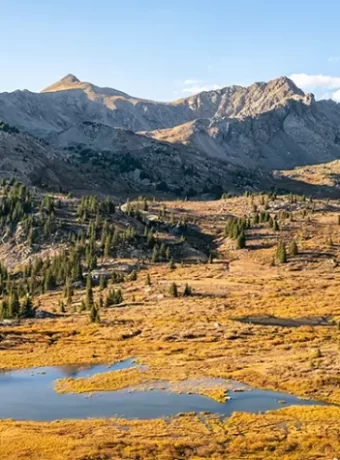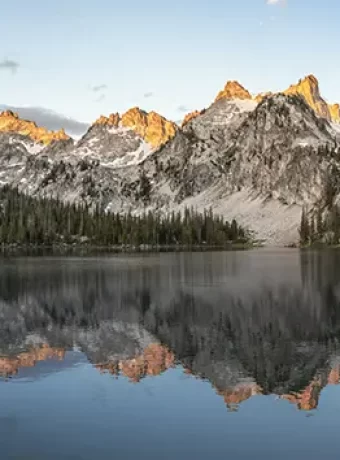DIY Colorado Roaring Fork & FryingPan River Fly Fishing
So, you’re eyeing DIY Colorado Roaring Fork and Fryingpan River Fly Fishing. You’re in the right spot. We’ll walk you through everything from finding public access points to picking the perfect gear for your adventure. Think of it as your go-to guide for stepping into these Gold Medal waters.
We dive deep into what makes these rivers a fly fisher’s dream: abundant trout, stunning scenery, and diverse hatches year-round. Moreover, we navigate through the maze of local rules ensuring your angling adventures remain blissfully undisturbed. Fly Fishing Roaring Fork & Fryingpan River as always been Zen experience. Hiking into the headwaters of the Fryingpan River for brook trout is a connective one. Or over the pass three quarters of a mile to Lost Man Lake for some great cutthroat fly fishing.
By the end of this read, you’ll have all the insights needed to plan an unforgettable trip – knowing when to visit based on river conditions and which flies will tempt those big fish during each season’s hatch.
Table Of Contents:
- Overview of DIY Fly Fishing in Colorado’s Roaring Fork and Frying Pan Rivers
- Access Points and Public Lands for Fishing
- Understanding Current Conditions and Flow Rates
- Seasonal Hatches and Fly Selection Guide
- Gear Recommendations for Roaring Fork & Frying Pan Anglers
- Local Regulations Every Angler Should Know
- Best Times to Fish in Roaring Fork & Frying Pan Rivers
- Conservation Efforts & Ethical Practices
- Trip Planning Essentials
- Community Resources & Reporting
- FAQs in Relation to DIY Colorado Roaring Fork and Frying Pan River Fly Fishing
- Conclusion of Roaring Fork and Frying Pan River Fly Fishing
Overview of DIY Roaring Fork and Fryingpan Rivers Fly Fishing Colorado
If you’re angling for a fly fishing adventure that promises big fish, stunning scenery, and the chance to test your skills against gold medal waters, then look no further than Colorado’s Roaring Fork and Fryingpan Rivers. These rivers are not just any spots; they are the epitome of what fly fishing in the Rocky Mountains is all about.
Nestled within a 14-mile ribbon of pristine water known as the Fryingpan River, you’ll discover a haven acclaimed for its Gold Medal status, where dreams of reeling in monumental trout become reality. Meanwhile, the Roaring Fork offers its own allure with Wild Trout Waters stretching from Hallum Lake down to Upper Woody Creek Bridge. Here, both beginners and seasoned veterans can find their slice of fishing paradise amidst beautiful mountain backdrops lined with pines.
Fly fishers flock here not only for the quality of catch but also because these rivers present an unmatched natural beauty framed by red sandstone formations and scenic canyons—a perfect backdrop for those Instagram-worthy catches. But let’s talk specifics: when planning your trip DIY Fly Fishing Saltwater on the Fly / Get Lost in America becomes an invaluable resource in unlocking access points along these majestic waters.
DIY Fly Fishing Roaring Fork & Fryingpan River can begin as wilderness backpacking fly fishing adventure.
Why Choose Colorado’s Rivers for Your Next Fly Fishing Adventure?
In search of unparalleled dry fly action? The Fryingpan River near Basalt thrives with robust hatches including caddis, blue wing olives during spring months while summer teases out green drakes—creating explosive surface feeding activity that’s nothing short of exhilarating. As if tailored made for epic battles on light weight fly rods, such as 3 and 4 weight fly rods. I have fished the upper Taylor River above the reservoir with a 1 weight fly rod. That was a very memorable experience of several 14 inch brown trout, that’s another article coming.
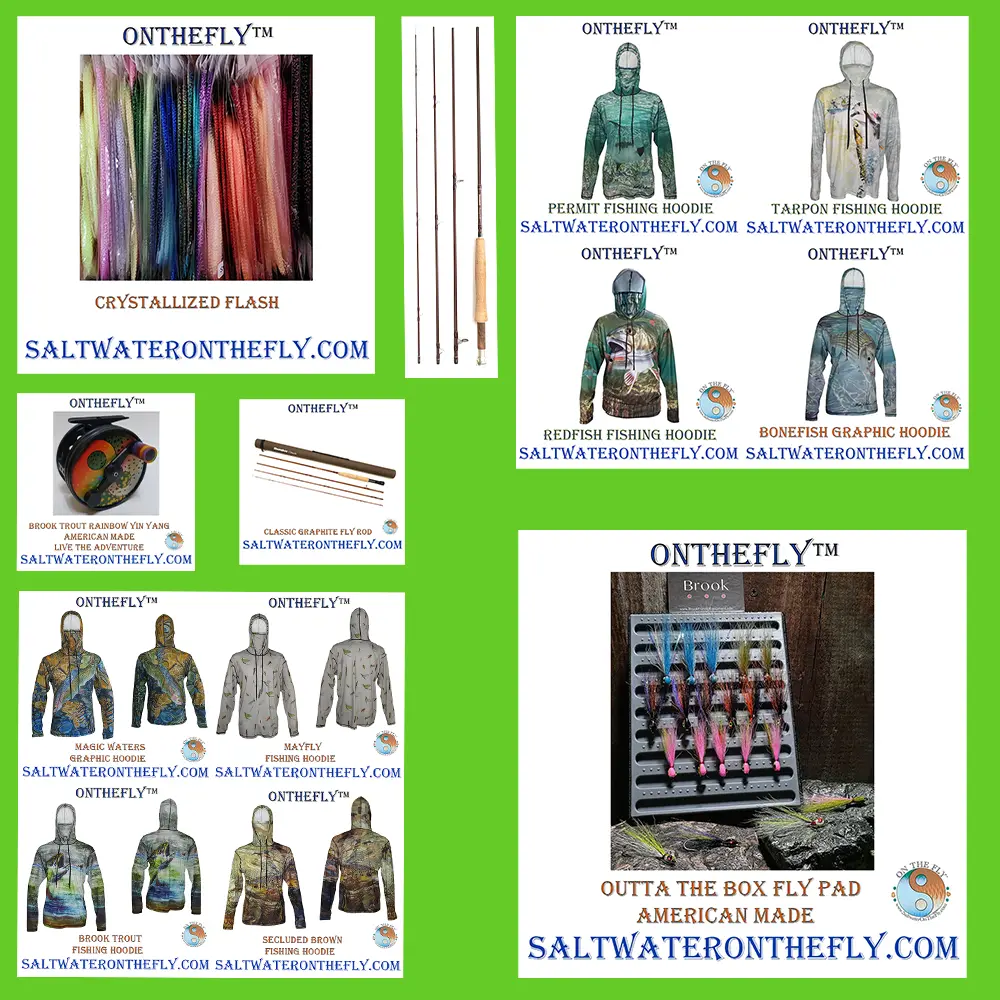
Fly fishing apparel and Hiking apparel designed and test by fly fishers and adventure seekers.
Fly Fishing Gear, Flies, and a state by state guide on DIY fly fishing.
Fryingpan river flows west from Ruedi Reservoir Dam offering varied opportunities across its miles public accessible stretches where every bend could hold your next personal best rainbow or brown trout beneath towering cliffs draped in verdant foliage.
Moving over to its sibling—the mighty Roaring Fork—weaves through picturesque valleys merging eventually with Crystal River before joining forces downstream towards Glenwood Springs expanding options throughout White River National Forest lands ensuring days filled exploring secluded runs loaded healthy populations native cutthroats alongside migratory species depending seasons’ call beckoning anglers far wide seeking ultimate freshwater challenge under open skies laden promise adventures untold awaiting those willing cast line explore hidden depths below shimmering surfaces where nature stories unfold one cast time set against vast wilds rugged heartland America itself personified essence true spirit West alive well within each riffle pool await discovery forge memories last lifetime so why wait?
“`
Colorado Fly Fishing Tip:
Colorado’s Roaring Fork and Frying Pan Rivers offer unmatched fly fishing adventures with trophy-sized trout, stunning scenery, and gold medal waters. Perfect for both beginners and seasoned anglers, these rivers promise exhilarating catches against a backdrop of the Rocky Mountains’ natural beauty.
Access Points and Public Lands for Fishing
Navigating Public Access for Optimal Fishing Experiences
Finding the perfect spot along Colorado’s Roaring Fork and Frying Pan Rivers isn’t just about luck; it’s about knowing where to look. With 8-9 miles of public access on the Frying Pan River alone, anglers have a solid starting point. But don’t stop there—the White River National Forest extends your playground significantly, offering extensive access points nestled among evergreen pines and scenic canyons.
To make your adventure as smooth as possible, familiarize yourself with White River National Forest’s guidelines. Adhering to the rules not only keeps your angling within the bounds of legality but also safeguards these untouched natural spaces for those who will come after us. Remember, respect starts with understanding where you’re allowed to cast a line.
Public lands are gems waiting to be explored but finding those spots requires some digging. Forest service and BLM maps. Are a big help DIY Fly Fishing Roaring Fork & Fryingpan River.
If navigating through national forests feels daunting, local fly shops in towns like Basalt become invaluable resources. They offer up-to-date river reports and insights into which sections of the gold medal waters are performing best according to current conditions—a priceless commodity when chasing big fish dreams on flies tied by hand under the shadow of red sandstone formations.
The importance of accessing accurate information cannot be overstated; whether it’s consulting updated flow rates or gage heights before heading out or simply asking around talking with locals and visiting Fly Shops in the area. Knowledge is power here—it lets you adapt strategies in real-time based on what mother nature throws your way from one day to the next across these beautiful mountain settings.
Beyond just being informed, embracing ethical practices while enjoying public lands ensures sustainability efforts continue unimpeded by our recreational activities—after all, we’re guests in habitats home not just to trout but countless other species relying on these ecosystems’ healthiness.
This stewardship mindset reinforces why detailed preparation matters: because every trip impacts more than just our personal stories—it touches upon larger narratives woven through natural landscapes we cherish dearly.
Finding the best fishing spots on Colorado’s Roaring Fork and Frying Pan Rivers means doing your homework. Dive into resources like DIY Fly Fishing maps, consult local fly shops for the latest conditions, and always fish with respect for nature. Knowledge and preparation are your keys to a great catch.
Understanding Current Conditions and Flow Rates
When it comes to fly fishing in Colorado’s Roaring Fork and Frying Pan Rivers, knowing the current conditions and flow rates is as crucial as choosing the right fly. These factors can make or break your fishing adventure. So, let’s dive into why gage height and ft³/s (cubic feet per second) gage readings are vital for planning your trips.
The Role of River Flows in Fly Fishing Success
River flows, measured in cubic feet per second (ft³/s), directly impact fish behavior and habitat accessibility. High flows might mean more challenging wading conditions but also bring big fish out from their hiding spots. Conversely, low flows could limit fish movements but provide clearer waters for sight fishing. Checking these conditions before you head out can save you time finding those Gold Medal stretches where trophy trout await.
Gage height offers insight into water levels that affect which areas will be most productive for casting your line. Ideal gage heights vary between rivers; thus, familiarizing yourself with what works best on both the Roaring Fork and Frying Pan Rivers ensures you’re always at the right spot at the right time.
Accessing Real-Time River Data Fly Fishing Roaring Fork & Fryingpan River
Check the USGS website for up to date river flows. At USGS website, you’ll find the latest on river currents and in-depth insights for those angling in Colorado’s top fly-fishing spots like Fryingpan River and its big sibling, Roaring Fork.
This invaluable resource not only lets you check current conditions but also forecasts changes based on weather patterns—information that proves essential when timing matters most during insect hatches or seasonal shifts affecting trout activity levels across various sections of each river system covered under national forest protections offering miles upon miles public access points awaiting exploration by avid fishermen everywhere regardless if they’re chasing after wild browns lurking beneath evergreen pines lining scenic canyon walls adorned with red sandstone formations unique unto themselves throughout this beautiful mountain region we call home here in Colorado where adventure meets tranquility beside flowing waters whispering secrets known only unto those willing listen closely enough hear them speak volumes without uttering single word aloud yet speaking directly soul itself reminding us all why we came first place: find peace nature while pursuing passion drives us onward toward next great catch waiting just around bend…
Knowing the flow rates and conditions of Colorado roaring Fork and Frying Pan Rivers is key to fly fishing success. Check USGS website the for real-time data on river flows, helping you find the best spots for big catches. This info is crucial for planning your trip around fish behavior, weather patterns, and seasonal shifts.
Seasonal Hatches and Fly Selection Guide
Mastering Summer Hatches for Peak Performance
Fishing during the summer months in Colorado’s Roaring Fork and Frying Pan Rivers can be akin to hitting a moving target, thanks to ever-changing hatches. But one thing remains constant: the thrill of catching big fish on tiny flies. Among these, Green Drake takes center stage in July and August, offering some of the most exhilarating dry fly fishing opportunities, Fly Fishing Roaring Fork & Fryingpan River
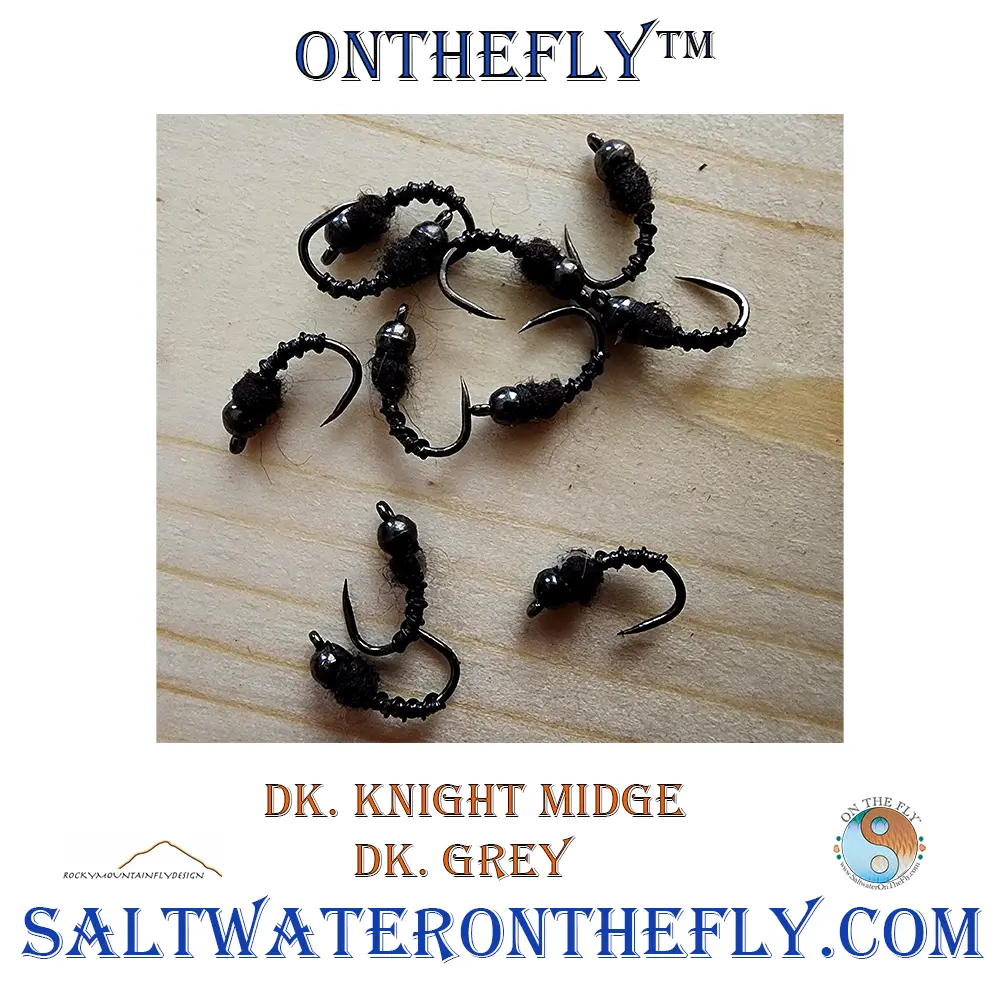
Midges and baetis patterns are great trailer pattern in the spring through fall behind terrestrials.
To make sure you’re prepared, stocking up on variations of Green Drakes—think nymphs in sizes 12-14 early in the season transitioning to duns as we move deeper into summer—is key. This preparation will pay off when you find yourself amidst one of these prolific hatches that both rivers are famous for. To stay in the loop with the latest happenings by the river, regularly watching water and air temperature updates can be a game-changer.
Winter Fly Fishing Strategies Fly Fishing Roaring Fork & Fryingpan River
Come winter, midge patterns dominate your fly box if you’re aiming for success on the water. It might seem counterintuitive—fishing with something so small it’s hard to see—but remember this: midges make up a significant portion of a trout’s diet during colder months when other insects are scarce.
Midge larvae patterns like Zebra Midges or Miracle Nymphs should become your go-to options; use them in sizes 18-22 for best results. Also consider adding emerger patterns such as WD-40s or RS2s which mimic this life stage perfectly—a critical moment when trout often feed aggressively despite icy conditions.
Beyond having the right flies, understanding how midges behave helps fine-tune your approach even further; they tend not just hatch but dance across surface waters creating ripples irresistible to trout lurking below ice-fringed edges. Embracing cold weather challenges by equipping yourself with knowledge about midge hatching behaviors, backed by consistent checks on river flows through reliable sources like DIYFlyFishing.com ensures that even under a blanket of snow, angling adventures continue yielding impressive catches throughout winter months around Ruedi Reservoir Dam where conditions permit year-round access points into gold medal stretches beneath scenic canyon walls lined with red sandstone formations whispering tales from epochs gone by yet still fueling today’s pursuits alongside roaring forks echoing whispers down frying pan rivers carved deep within heartlands where adventurers roam free pursuing golden flecks glimmering beneath evergreen pines against beautiful mountain backdrops awaiting those daring enough venture forth equipped not just gear but wisdom passed down generations anglers alike bound timeless tradition connecting us all shared passion wild places fish call home.
Summer fishing in Colorado’s Roaring Fork and Frying Pan Rivers means being ready for Green Drake hatches with the right flies. Come winter, success shifts to midge patterns like Zebra Midges or Miracle Nymphs. Stay updated on conditions and embrace each season’s unique challenges for thrilling catches year-round.
Gear Recommendations for Roaring Fork & Frying Pan Anglers
Fishing the Roaring Fork and Frying Pan Rivers without the right gear is like trying to eat soup with a fork – it just doesn’t work. These Colorado gems, known for their Gold Medal waters, are not only about the beauty of nature but also about the thrill of catching some big fish. To conquer the challenges of the Roaring Fork and Frying Pan Rivers, here’s a meticulously crafted inventory of essentials you’ll want to have by your side.
Equipment and Gear Recommendations
First things first, you’ll need a 9-foot 6-wt fly rod paired with a distance presentation floating line; this setup is versatile enough to handle nearly anything these rivers throw at you. Next up, waders are non-negotiable unless you plan on developing hypothermia as part of your fishing experience. I like a good pair of graphic patterned leggings under my waders. Don’t forget a sturdy pair of boots – those rocks can be slippery. To keep everything organized, invest in a good quality vest or pack that has plenty of pockets for all your flies and tools.
When it comes to flies, diversity is key due to the varied hatches throughout the year. Ensure you have an assortment including blue wing olives and green drakes for summer months along with midges for winter fly fishing strategies. For real-time updates on what’s biting, local reports from reputable sources such as local Fly Shops’ for Fryingpan River Reports are invaluable.
Diving Into DIY Maps Fly Fishing Roaring Fork & Fryingpan River
Navigating these waters can feel overwhelming without some guidance which is where fly fishing maps come in handy. Do your research. They give insights into access points along both rivers ensuring you find those sweet spots away from crowds. For detailed mapping resources including public access sites across White River National Forest. This tool not only helps in planning your trip but ensures that every outing maximizes potential catches by highlighting gold medal stretches alongside scenic canyon views adorned by red sandstone formations under evergreen pines. Remember successful angling isn’t just about having high-end equipment; understanding river flows through gage height readings plays a crucial role too especially when targeting specific species during different seasons.
In conclusion visiting one’s nearest fly shop before hitting either river provides last-minute advice plus any additional gear adjustments based upon current conditions—a step often overlooked yet sometimes makes all difference between an okay day versus unforgettable adventure amidst beautiful mountain landscapes Colorado offers anglers around world.
Don’t hit the Roaring Fork and Frying Pan Rivers without the right gear – think a versatile 9-foot 6-wt fly rod, waders for warmth, sturdy boots for slippery rocks, and a vest or pack with plenty of storage. Mix up your flies based on season and check local reports for what’s biting. Maps are your best friend to navigate access points and maximize catches in these Gold Medal waters.
Local Regulations Every Angler Should Know
Fishing in Colorado’s Roaring Fork and Frying Pan Rivers isn’t just about casting your line into the water and hoping for the best. It’s a nuanced art that requires knowledge of local regulations to ensure both a successful and legal fishing experience. Before you immerse yourself in the crystal-clear currents, it’s crucial to arm yourself with the necessary insights and guidelines for a lawful yet fruitful angling adventure.
Catch-and-Release Areas
The beauty of fly fishing in areas designated as catch-and-release is unparalleled, but it comes with its own set of rules. In certain sections of these rivers, anglers are required to release their catches back into the wild. This practice helps maintain healthy fish populations and ensures future generations can enjoy the thrill of catching wild trout.
To stay informed on which stretches adhere to catch-and-release policies, visit Colorado Parks & Wildlife. Here, you’ll find detailed maps highlighting specific zones where this regulation is enforced.
Size Limits for Trout
Another critical aspect every angler should be aware of is size limits for trout. The regulations on fish sizes across various river segments aim to shield juvenile aquatic life and ensure the continuity of reproductive communities. Ignorance isn’t bliss when it could mean inadvertently breaking conservation laws designed for long-term ecological health.
Different sections have varying regulations concerning how big or small your catch must be before keeping it—if allowed at all within those bounds. For precise measurements applicable to each segment along our beloved Roaring Fork and Frying Pan Rivers, direct access through reputable sources like CPW Fishing Information proves invaluable. I highly recommend learning the proper way to handle fish and release them back into the wild. “Catch and Release the Art of the Sport”
Familiarizing Yourself with Specific Rules per Section
Last but certainly not least, understanding that regulations can change depending on which part of the river you’re fishing in is crucial—especially since both rivers boast diverse ecosystems from headwaters down through lower reaches where they join larger bodies such as Colorado River or Crystal River respectively. From mandatory use types flies (think barbless hooks) seasons during open certain times year due species spawning patterns – there’s much consider ensuring your outing doesn’t run afoul law while still providing ample opportunity land some impressive catches.
A solid grasp on localized mandates goes beyond basic compliance—it enriches your connection with nature by fostering responsible stewardship over these aquatic treasures we so cherish. For comprehensive guidance tailored specifically toward segments spanning Gold Medal Waters up through scenic canyon routes laden red sandstone formations evergreen pines alike always make sure refer official resources available via CPW portal linked above. Even if you consider yourself quite the expert, it’s always wise to brush up on your know-how and keep abreast of new developments. Doing so plays a pivotal role in maintaining the integrity of habitats that are home to a magnificent range of biodiversity found within unique environments like ours here in Colorado.
Before you hit the Roaring Fork and Frying Pan Rivers, know the local fishing laws to keep your experience both fun and legal. This means understanding catch-and-release zones, trout size limits, and specific rules for different river sections. Staying informed through Colorado Parks & Wildlife is key to respecting nature while enjoying your catch.
Best Times to Fish in Roaring Fork & Frying Pan Rivers
Finding the perfect time to cast your line in Colorado’s Roaring Fork and Frying Pan rivers can make all the difference between a good day and an unforgettable adventure. The key? Grasping the nuances of aquatic life’s rhythms, alongside mastering hatch calendars, equips you with the precision needed for impeccable timing.
Summer Months: A Prime Time for Anglers Fly Fishing Roaring Fork & Fryingpan River
The summer months offer some of the best fishing experiences on these Gold Medal waters. During this season, early mornings are golden hours as water temperatures are cooler and fish are more active. This is especially true from June through August when hatches like Green Drake sweep through the rivers, creating a feast for trout.
To maximize your success during these bountiful times, check out current conditions before heading out. Websites such as DIY Fly Fishing provide up-to-date river flow rates and conditions essential for planning your trip Fly Fishing Roaring Fork & Fryingpan River
All Year Round Accessibility: Embracing Seasons
What makes fly fishing in Roaring Fork and Frying Pan rivers stand out is their year-round access to anglers. While summer may be prime time due to significant hatches, don’t overlook winter or shoulder seasons where midge patterns dominate under clear skies.
In colder months when most shy away from the waters, brave souls find solace in quiet streams with high chances of landing big fish amidst stunning frozen landscapes—demonstrating that any time can be ‘the best’ if you’re well-prepared.
Tailoring Your Approach Based on Hatch Schedules
Hatch schedules play a crucial role in determining not just when but how you should fish these majestic rivers. For instance, targeting caddis hatches requires different tactics compared to chasing after blue wing olives or marveling at red sandstone formations while waiting for surface-feeding trout during green drake emergences.
Gaining insight into these patterns allows anglers to select flies more strategically; thereby enhancing their overall experience along scenic stretches like those near Ruedi Reservoir Dam or within evergreen pines-lined banks found throughout White River National Forest areas accessible via public points highlighted on maps provided by resources like Colorado Parks & Wildlife.
Find the best fishing times by understanding fish activity and hatch schedules, especially during early mornings in summer for active trout. Year-round access means adapting tactics to seasonal hatches can boost your success across Colorado’s scenic fly-fishing spots.
Conservation Efforts & Ethical Practices
Fly fishing in Colorado’s pristine rivers, such as the Roaring Fork and Frying Pan, isn’t just about landing the biggest trout. It’s also a commitment to conservation and ethical angling practices that ensure these waters remain vibrant for generations to come.
The Role of Anglers in Conservation
Fishers are pivotal in upholding the environmental equilibrium of cherished fly-fishing spots, intertwining their passion with preservation. By adhering to catch-and-release policies, they help maintain healthy fish populations while still enjoying the thrill of the catch. In the Gold Medal streams that ribbon through both rivers, pursuing trophy fish is a common quest, yet it’s crucial to shield their populations for enduring abundance.
Beyond catch-and-release, anglers contribute by staying informed on current conservation issues through reputable sources like Frying Pan River reports or updates from Vail Valley Anglers regarding conditions on the Roaring Fork River. These resources not only offer insights into river health and hatches but also highlight any concerns or changes anglers should be aware of before hitting the water.
An understanding and respect for local regulations form another cornerstone of ethical fly fishing. Different sections across these rivers have varying rules aimed at protecting ecosystems—from size limits to specific gear restrictions—ensuring that everyone plays a part in preservation efforts.
Fishing Ethics: More Than Just Rules
Ethical fishing transcends mere regulations, reflecting an angler’s intrinsic pledge towards conservation and care for aquatic life. Practicing minimal impact techniques such as using barbless hooks reduces injury during catch-and-release encounters ensuring each fish has a better chance at survival post-catch. Additionally, proper handling methods when releasing fish back into their habitat minimize stress on them, further contributing towards sustainability goals.
Cleanliness around access points and respecting no-trace principles not only protect aquatic environments but enhance experiences for fellow enthusiasts too. Remembering that every piece of litter removed makes a difference encourages responsible behavior among all users sharing these natural resources Fly Fishing Roaring Fork & Fryingpan River.
To wrap it up, adopting practices that prioritize conservation ensures both newcomers itching to make their first throw and experienced anglers with countless catches can keep reveling in the unique joys of fly fishing, safeguarding the chance for future generations to explore and find joy in Colorado’s stunning alpine waterways.
Fly fishing in Colorado goes beyond the catch; it’s about conservation and ethical practices that keep rivers like Roaring Fork and Frying Pan thriving. Anglers contribute by practicing catch-and-release, staying informed on river health, respecting local regulations, using minimal impact techniques, and keeping spots clean for future generations to enjoy.
Trip Planning Essentials
Finding the right spot to lay your head after a long day casting flies on Colorado’s Roaring Fork and Frying Pan Rivers can be as crucial as choosing the right fly. When it comes to accommodations in Basalt, options range from cozy cabins nestled among evergreens to modern hotels that offer a soothing end to an adventurous day. If you’re looking for something with more upscale amenities, Aspen is just up the road with its luxury resorts and boutique lodgings.
Getting around the Roaring Fork Valley doesn’t have to be complicated. While having your own vehicle offers maximum flexibility for hitting various fishing access points along both rivers, local shuttle services provide convenient alternatives. They let you hop between hotspots without worrying about navigating or parking—especially handy during peak seasons when spots fill up fast.
If angling isn’t enough outdoor activity for you, this area has plenty more in store. Hiking trails wind through scenic canyon landscapes adorned with red sandstone formations—a stark contrast against the backdrop of beautiful mountain vistas and lush evergreen pines surrounding Ruedi Reservoir Dam.
Navigating Public Access for Optimal Fishing Experiences
To make sure your DIY fly fishing adventure goes off without a hitch, familiarizing yourself with public access points is key. The White River National Forest provides extensive river map resources that detail where anglers are welcome along both waterways—an essential tool considering 8-9 miles of accessible bank awaits along the Frying Pan alone.
Beyond just finding a place to cast your line, understanding how different sections vary—from Gold Medal stretches boasting big fish potential near Ruedi Reservoir down to wild trout waters further west—can dramatically influence your success rate and overall experience.
Seasonal Considerations & Additional Activities
Timing matters not only because certain times of year see optimal hatches but also due to fluctuating river flows affecting accessibility and fish behavior alike; ft³/s gage readings become invaluable here. Out DIY Fly Fishing real-time data helps ensuring you hit the water at just the right moment. Additional activities abound in this part of Colorado should inclement weather or rest days factor into your plans—from exploring Glenwood Springs’ natural hot springs pools as a perfect post-fishing relaxation technique to taking advantage of miles upon miles available for hiking within national forest lands mentioned earlier, offering opportunities even beyond what’s found alongside these iconic rivers. White River National Forest’s official site is packed full info including trail guides and current conditions updates providing all need plan well-rounded trip outside simply chasing trout.
Finding the perfect place to stay and knowing how to get around are key for a stress-free fishing trip in Colorado’s Roaring Fork Valley. Dive into local accommodations, shuttle services, and outdoor activities beyond fishing like hiking near Ruedi Reservoir Dam. Don’t forget to check out public access points along the rivers for optimal fishing spots and keep an eye on seasonal changes that affect fish behavior.
Community Resources & Reporting
This means staying updated with the latest river conditions, hatch reports, and community insights. Fortuitously, specialized platforms exist to ensure you’re always in the know.
Before heading out for your fly fishing adventure, a smart move is checking local fishing reports. These aren’t just weather updates—they’re gold mines of information on what’s biting, where the fish are thriving, and which flies are irresistible to them at any given time. Websites of local Shops’ the Roaring Fork and Fryingpan River for Fishing Reports, offer detailed observations from seasoned anglers who know these waters like the back of their hand.
Similarly, local fly shops Roaring Fork River report presents invaluable data on water clarity, flow rates (measured in ft³/s gage height), insect activity (like those unpredictable caddis hatches or the much-anticipated blue wing olives), making it easier for DIY enthusiasts to plan their trips effectively.
Navigating Public Access for Optimal Fishing Experiences
The beauty of rivers such as the Frying Pan and Roaring Fork lies not only in their abundant trout populations but also in how accessible they are—thanks largely to public lands like White River National Forest offering miles upon miles of open access points along both rivers.
To maximize your experience—and possibly land that big fish—it pays off to have a solid grasp on these access sites before setting foot outside. An effective strategy includes mapping out your journey using available online resources; this ensures you hit all high-potential spots without wandering aimlessly through beautiful mountain landscapes dotted with evergreen pines and red sandstone formations—tempting as that may be.
Beyond knowing where to go, the timing is crucial too. Flow rates dictate much of fly fishing success so keeping tabs on current conditions via platforms like DIY Fly Fishing can make or break your day by letting you adapt strategies accordingly whether facing roaring torrents or serene streams running through scenic canyons under Ruedi Reservoir Dam’s watchful eye.
Stay ahead in fly fishing at Roaring Fork and Frying Pan Rivers by checking local reports for the latest on what’s biting and where. Use community resources to get insights on river conditions, hatch reports, and public access points for a successful catch.
FAQs in Relation to DIY Colorado Roaring Fork and Frying Pan River Fly Fishing
How do you fish the Roaring Fork River?
Focus on deep runs and eddies. Use nymphs early, dry flies when hatches start. Be stealthy; these trout spook easy.
Where is the best fishing spot on the Fryingpan River?
The Toilet Bowl near Ruedi Dam teems with large trout, but it’s challenging. Bring your A-game and heavy tippets.
What size fly rod for Colorado?
A 9-foot 6-wt fly rod nails it for versatility across Colorado’s diverse waters, from delicate casts to battling wind.
Where is the Toilet Bowl on the Fryingpan River?
Near Ruedi Reservoir’s dam in Basalt. It’s a hotspot due to high nutrient flows attracting trophy-sized fish year-round.
Conclusion of Roaring Fork and Frying Pan River Fly Fishing
Now you’ve got the scoop on DIY Colorado Roaring Fork and Frying Pan River Fly Fishing. You know where to access these pristine waters, what gear will serve you best, and when those elusive trout are biting.
Dive into this adventure knowing how river flows can make or break your day. Understand that every hatch brings a new chance at landing the big one.
Keep in mind, the rules are set to ensure angling remains a joy for all. Stay informed about catch-and-release areas to ensure our Gold Medal waters thrive for years to come.
Tackle each season with confidence. Whether it’s matching wits with winter midges or summer caddis hatches, success is all in the timing and technique.
In essence, preparation meets opportunity right here in Colorado’s scenic rivers. Embrace these nuggets of wisdom as you embark on your fly fishing adventure; they’re not merely suggestions, but the roadmap to remarkable moments surrounded by nature’s splendor.
While in Colorado, Fly Fish South Platte or Gunnison Rivers
Cheesman Canyon of the South Platte River has a lot of great access if you are willing to hike. Desire a good float trip fly fishing the Gunnison River has both great stretches of floatable and wade able water. Or head straight up to Fortress Lake in Canada.


